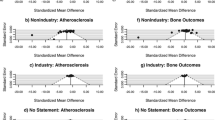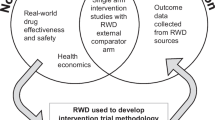Abstract
Using three well-designed experimental studies as illustration, we demonstrate that the biostatistical design and analysis of long-term animal studies simulating human osteoporosis should be analogous to the design and analysis of randomized clinical trials. This principal is in accordance with the recommendations from the International Conference on Harmonisation guidelines concerning statistical principles in clinical trials (1). An important element of biostatistical study design is sample size. The three studies that are described herein used an a-priori sample size estimation for the one-way layout that included controls and several treatment and dose groups.
In these k-sample designs, with at least one control group, both the multiple comparison procedure and trend tests within procedures for identification of the minimal-effective dose are recommended. Although p-values in pharmacology are quite common, confidence intervals should be used according to their interpretation for both statistical significance and clinical relevance. The use of one-sided confidence intervals for both the difference and the ratio to control for proving either superiority or at least noninferiority is demonstrated by real data examples. Relevant and relatively straightforward software is available for biostatistical analysis and can also be used to aid design. In summary, referring to published, well-designed experimental studies can help to assist with ensuring the quality of future investigations.
Similar content being viewed by others
References
International Conference on Harmonisation. ICH E9 Statistical Principles for Clinical Trials. Geneva, Switzerland: International Conference on Harmonisation; 1998.
Hashimoto T, Yamada M, Maeda H. Statistical considerations for preparation of a study report on pharmacological studies. Nippon Yakurigaku Zasshi. 2000;116(1):23–28.
Andersen H, Spliid H, Larsen S. Statistical models for toxicity and safely pharmacology studies. Drug Inf J. 2000;34(2):631–643.
International Conference on Harmonisation. ICH E4 Harmonised Tripartite Guideline ‘Dose-Response Information to Support Drug Registration. Geneva, Switzerland; International Conference on Harmonisation; March 1994.
Phillips A, Ebbutt A, France L. The International Conference on Harmonization guideline “Statistical Principles for Clinical Trials”: Issues in applying the guideline in practice. Drag Inf J. 2000;34(2):337–348.
Kanis JA, Oden A, Johnell O, Caulin F, Bone H, Alexandre J-M, Abadie E, Lekkerkerker F. Uncertain future of trials in osteoporosis. Osteoporos Int. 2002;13(6):443–449.
Consensus Development Conference. Diagnosis, prophylaxis and treatment of osteoporosis. Am J Med. 1993;94:646–650.
Kalu DN. The ovariectomized rat model of postmenopausal bone loss. Bone Miner. 1991;15(3):175–192.
United States Food and Drug Administration. Guidelines for Preclinical and Clinical Evaluation of Agents Used in the Prevention or Treatment of Postmenopausal Osteoporosis. Rockville, MD: United States Food and Drug Administration; 1994.
Committee for Proprietary Medicinal Products. Note for Guidance on Involutional Osteoporosis in Women. London, England: The European Agency for the Evaluation of Medicinal Products, Human Medicines Evaluation Unit; 2001.
World Health Organisation. Guidelines for the Preclinical Evaluation and Clinical Trials in Osteoporosis. Geneva, Switzerland: World Health Organisation; 1998.
Bauss F. Ibandronate in malignant bone diseases and osteoporosis—preclinical results. Onkologie. 1997;20(3):204–208.
Delmas PD, Recker RR, Stakkestad JA, Chestnut CH, Hoiseth A, Weichselberger A, Huss H, von Stein T, Schimmer R. Oral ibandronate significantly reduces fracture risk in postmenopausal osteoporosis when administered daily or with a unique drug-free interval: results from a pivotal phase III study. Osteoporos Int. 2002;13:S15 (Abstract 037).
Bauss F, Minne HW, Sterz H, Weng U, Wesch H, Ziegler R. Comparative bone analysis via inflammation-mediated osteopenia (IMO) in the rat. Calcif Tissue Int. 1995;37(5):539–546.
Bauss F, Wagner M, Hothorn LA. Total administred dose of ibandronate determines its effects on bone mass and architecture in ovariectomized aged rats. J Rheumatol. 2002;29(5):990–998.
Bauss F, Lalla S, Endele R, Hothorn LA. The effects of treatment with ibandronate on bone mass, architecture, biomechanical properties and bone concentration of ibandronate in ovariectomized aged rats. J Rheumatol. 2002;29(10):2200–2208.
Hothorn LA, Neuhaeuser M, Koch HF. Analysis of randomized dose-finding studies: closure test modifications based on multiple contrast tests. Biometrical J. 1997;39:467–479.
Bauer P, Röhmel J, Maurer W, Hothorn LA. Testing strategies in multi-dose experiments including active control. Stat Med. 1998;17(18):2133–2146.
Mühlbauer RC, Bauss F, Schenk R, Janner M, Bosies E, Strein K, Fleisch H. BM 21.0955, a potent bisphosphonate to inhibit bone resorption J Bone Miner Res. 1991;6(9):1003–1011.
Hauschke D, Kieser M, Hothorn LA, Proof of safety in toxicology based on the ratio of two means for normally distributed data. Biometrical J. 1999;41(3):295–304.
Horn M, Vollandt R. Sample sizes for comparisons of k treatments with a control based on different definitions of the power. Biometrical J. 1998;40:589–612.
Bretz F, Hothorn LA, Hsu JC. Identifying effective and/or safe doses by stepwise confidence intervals for ratios. Stat Med 2003;22(6):847–858.
Hauschke D. A note on sample size calculation in bioequivalence trials. J Pharmacokinet Phar. 2002;29(1):89–94.
Hothorn LA, Martin U. Application of adaptive interim analysis in pharmacology. Drug Inf J. 1997;30(2):615–619.
Tukey JW. The problem of multiple comparisons. Unpublished manuscript (1953). Reprinted in Braun HI, ed. The Collected Works of John W. Tukey. Volume 8. New York, NY: Chapman and Hall; 1994.
Dunnett CW. A multiple comparison procedure for comparing several treatments with a control. J Am Stat Assoc. 1955;50:1096–1121.
Jonckheere AR. A distribution-free k-sample test against ordered alternatives. Biometrika. 1954;41:133–145.
Robertson T, Wright FT, Dykstra RL. Order Restricted Statistical Inference. New York, NY: Wiley; 1988.
Bretz F, Hothorn LA. Testing dose-response relationships with a priori unknown, possibly non-monotonic shapes. J Biopharm Stat. 2001;11(3):193–207.
Bretz F. Powerful Modifications of Williams’ Test on Trend. PhD Thesis. Hannover, Germany: University of Hannover; 1999.
Hirotsu C. The cumulative chi-squares method and a studentised maximal contrast method for testing an ordered alternative in a one-way analysis of variance model. Reports Stat Applica Res. 1979;26:12–21.
Hauschke D. Choice of delta: A special case. Drug Inf J. 2001;35(3):875–879.
Ng TH. Choice of delta in equivalence testing. Drug Inf J. 2001;35(4):1517–1527.
Roehmel J. Therapeutic equivalence investigations: Statistical considerations. Stat Med. 1998;17(15–16):1703–1714.
Fieller E. Some problems in interval estimation. J Royal Stat Soc. 1954; B16:175–185.
Schuirmann DJ. A comparison of the two one-sided tests procedure and the power approach for assessing the equivalence of average bioavailability. J Pharmacokin Biopharm. 1987;15:657–680.
Chow SC, Shao S. A note on statistical methods for assessing therapeutic equivalence. Control Clin Trials. 2002;23:515–520.
Hothorn T, Munzel U. Exact Nonparametric Confidence Intervals for the Ratio of Medians. Technical report. Erlangen, Germany: University of Erlangen; 2002.
Hauschke D, Kieser M. Multiple testing to establish noninferiority of k treatments with a reference based on the ratio of two means. Drug Inf J. 2001;35(4):1247–1251.
Author information
Authors and Affiliations
Corresponding author
Additional information
Presented at the Third International DIA Workshop on “Statistical Methodology in Non-Clinical R&D,” Barcelona, Spain, September 2002.
Rights and permissions
About this article
Cite this article
Hothorn, L.A., Bauss, F. Biostatistical Design and Analyses of Long-Term Animal Studies Simulating Human Postmenopausal Osteoporosis. Ther Innov Regul Sci 38, 47–56 (2004). https://doi.org/10.1177/009286150403800107
Published:
Issue Date:
DOI: https://doi.org/10.1177/009286150403800107




